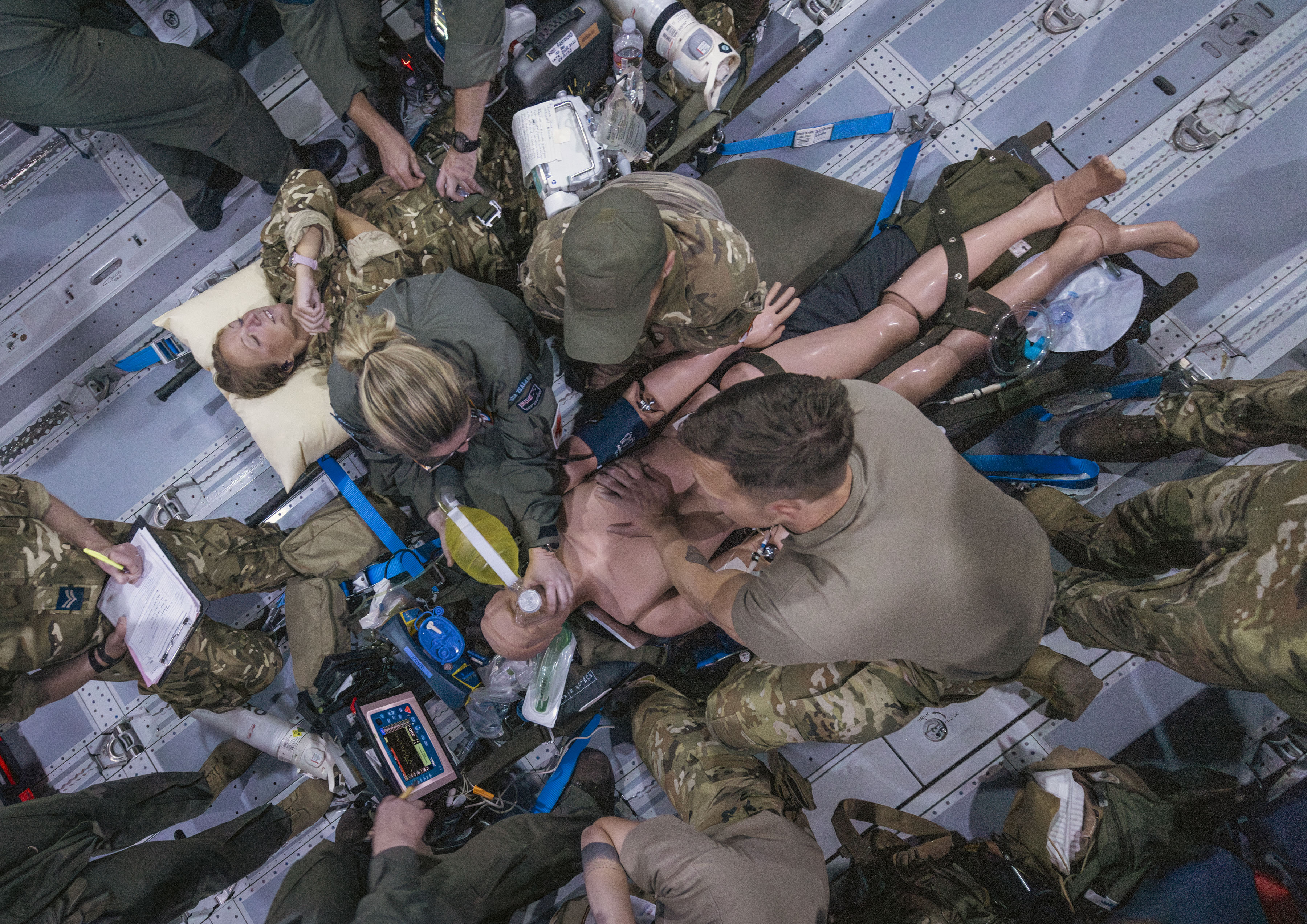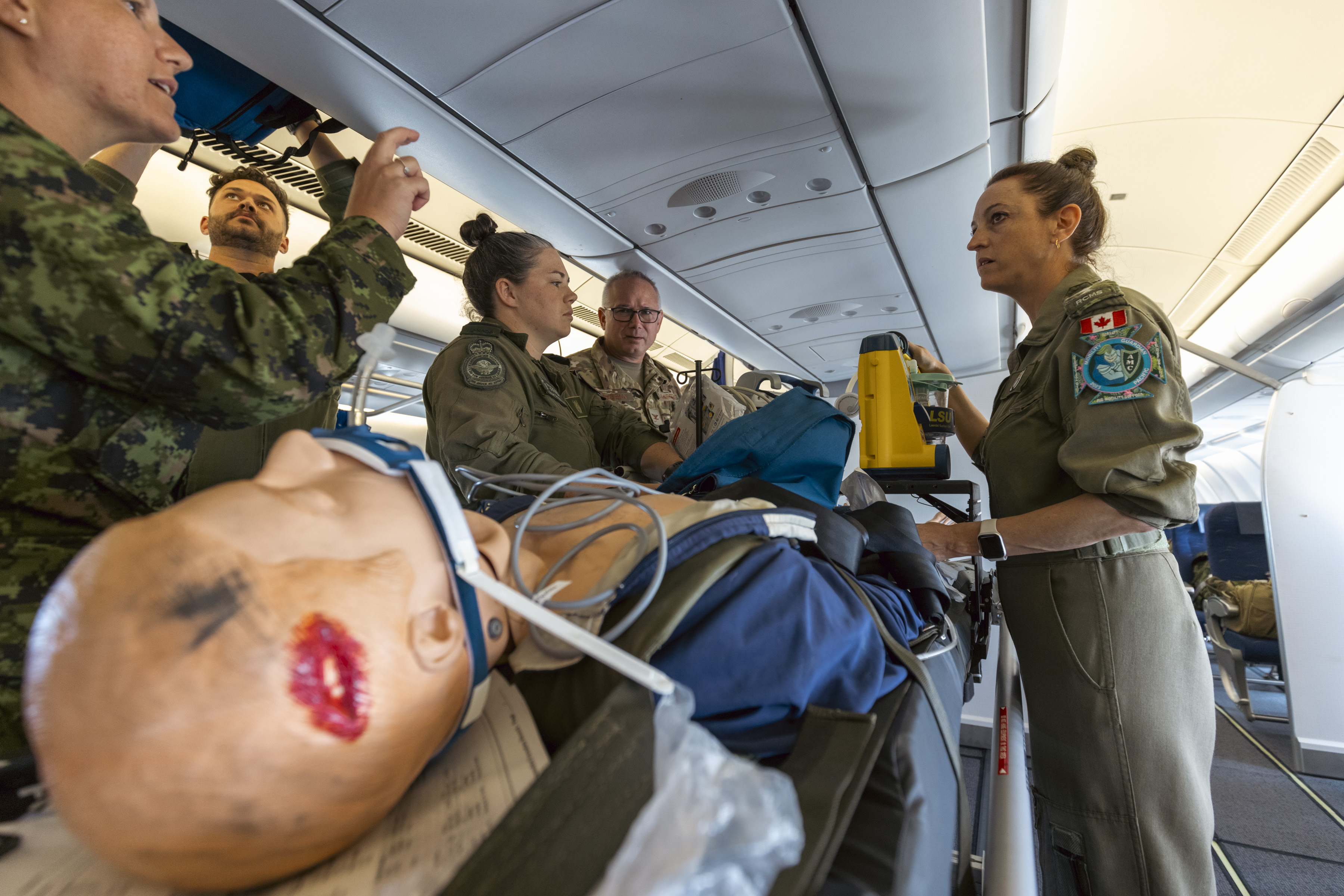The Royal Air Force Brize Norton based Tactical Medical Wing (TMW) has taken part in one of the largest Aero Medical Evacuation exercises run for many years, Exercise Mobility Guardian 23.

The exercise run by the United States Air Mobility Command brought together personnel from Australia, Canada, France, Japan and New Zealand, as well as personnel from the USAF and RAF. The involvement of the Japanese Self Defence Force on the exercise was a first, as was the deployment of the TMW to Japan during the exercise. The overarching aim of the exercise was to improve interoperability between the nations while operating in an area that spread from Northern Australia to Japan and as far east as Hawaii.

The integration of medical personnel from the participating nations was a key element, as ways and means to operate over such large distances were practiced. This training is vital to overcome a concept that has become known as the ‘Tyranny of Distance’. Also important was the opportunity to practice procedures associated with the core role of TMW in a simulated and controlled environment.

The interoperability training was achieved by combining the resources of all the participating nations on the exercise, operating from a range of different aircraft types to practice critical care medical evacuations. These medical evacuation exercises are crucial in crisis and disaster scenarios as partners come together to support each other.

Flight Lieutenant White, a Flight Commander with the Aero Medical Evacuation Squadron and who has led the planning for the Tactical Medical Wing deployment onto the exercise said:
This exercise is incredibly important for Tac Med Wing, as it is giving us the opportunity to operate in this part of the world for the first time and also to develop interoperability with our colleagues from the other nations.
It has been an extremely valuable learning experience for everyone, medical teams, aircrew and enablers alike. We have gained understanding of the other nations procedures and practices as well as equipment, whilst sharing our own ways of operating with them.
For one sortie on board a RAF Atlas A400M, a team from the TMW was joined by Aero Medical teams from New Zealand and the USAF. The New Zealand Team was made up of personnel from both the Royal New Zealand Air Force and New Zealand Army, while the USAF team was made up of individuals from several USAF units.

During the flight from Guam to Hawaii, the combined team carried out a series of medical exercises to simulate the care casualties would receive during their evacuation from a region that has suffered a Humanitarian Disaster, such a Typhoon or Tsunami. The flight simulated the transportation of casualties to a medical facility outside the disaster hit region, for final treatment. The patients ranged from those with isolated limb injuries to one casualty with serious and complicated life threatening injuries.

On return from Hawaii the TMW carried out a series of interoperability training exercises with other military medical personnel deployed on the exercise aboard several different partner nation aircraft before deploying to Japan for the last week of the exercise aboard the RAF Voyager.

During the exercise, the Aerospace Medicine Working Group of the Five Eyes Air Force Interoperability Council (AFIC) that works to create common standard across the air forces of Australia, Canada, New Zealand, The United Kingdom and the United States have been evaluating the training.
“Interoperability with our allies and partners is essential to future large scale air operations. This exercise has been key in validating the work of AFIC to develop interoperability standards and procedures for our medical personnel. It is a rare opportunity to be able to gather our medical personnel together and give then challenging scenarios to exercise their skills in this important region”.
Wing Commander Mollan
UK representative
The TMW deployment onto the exercise has consisted of 16 medical personnel who form a Critical Care Air Support Team, two Aero Medical Evacuation Teams, an Aero Medical Evacuation Liaison Officer, Infection Prevention Control Specialist and two Medical Training Officers to oversee the training on the exercise.








